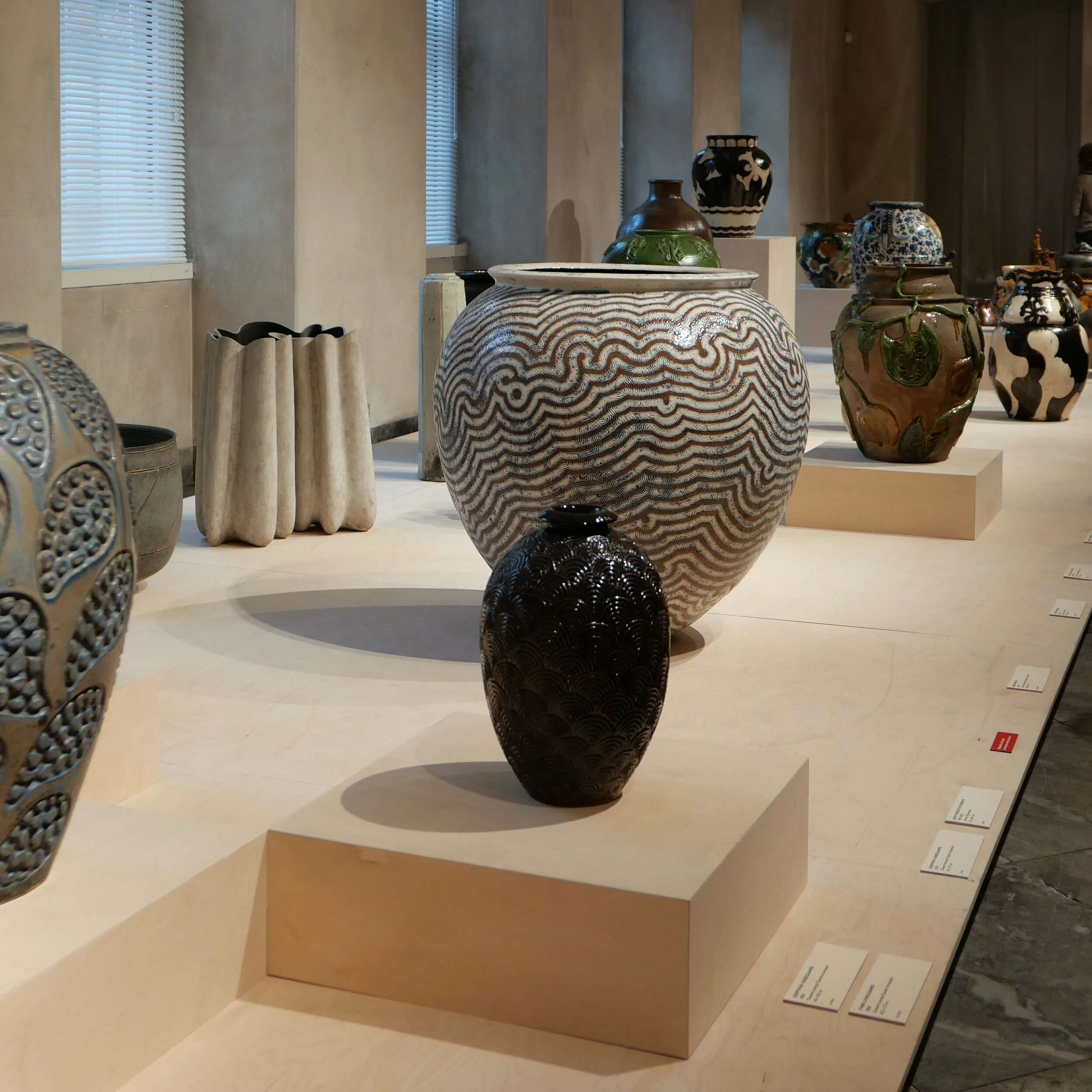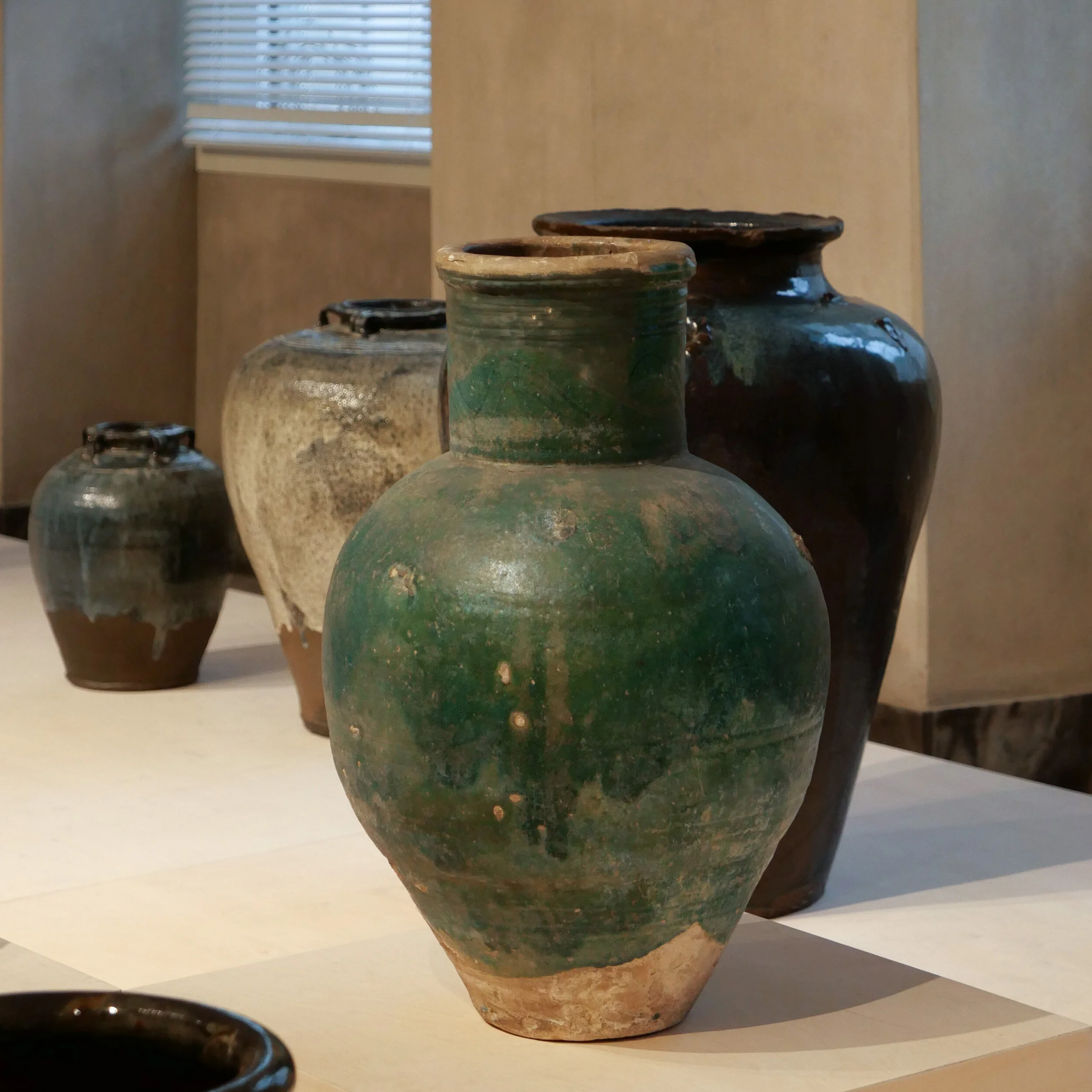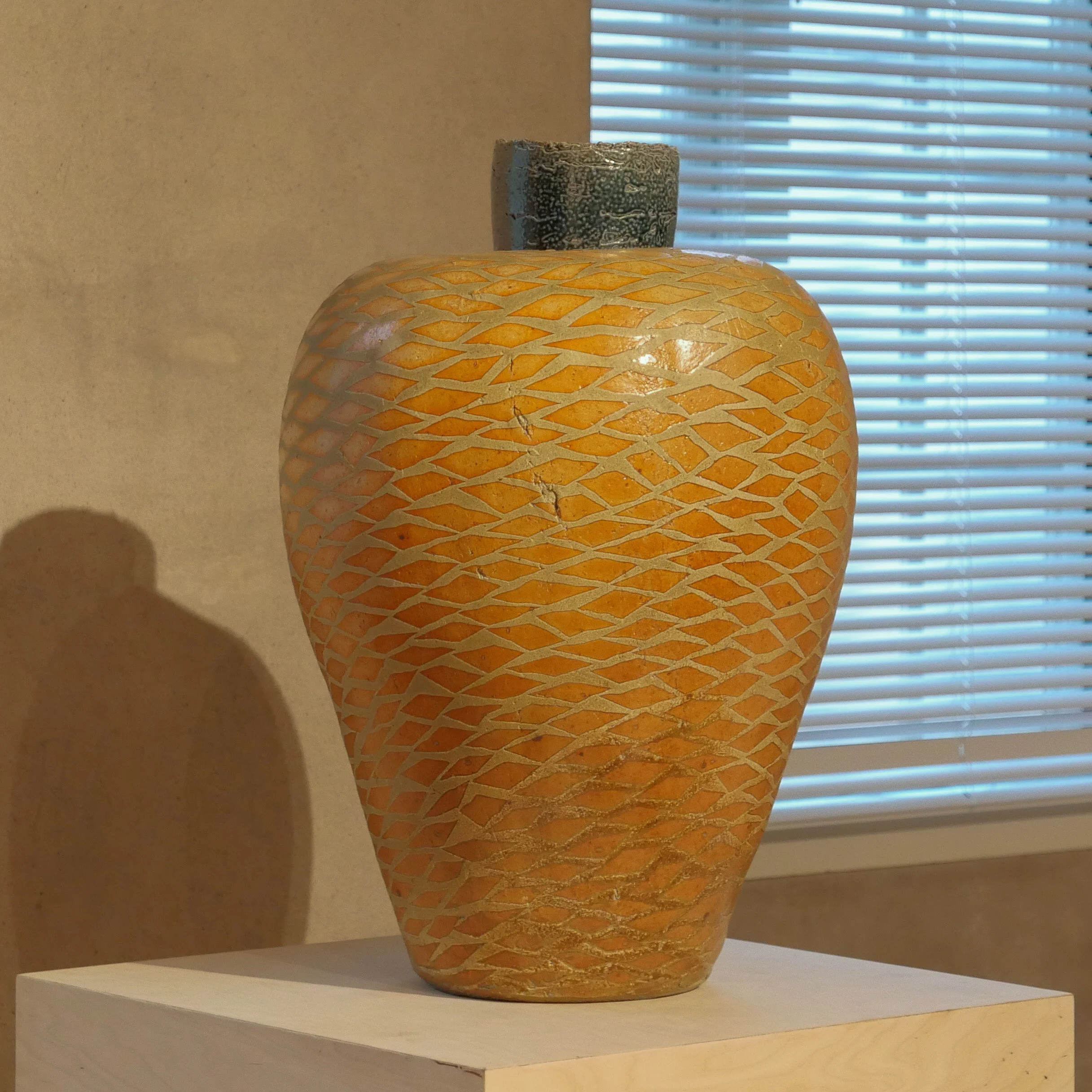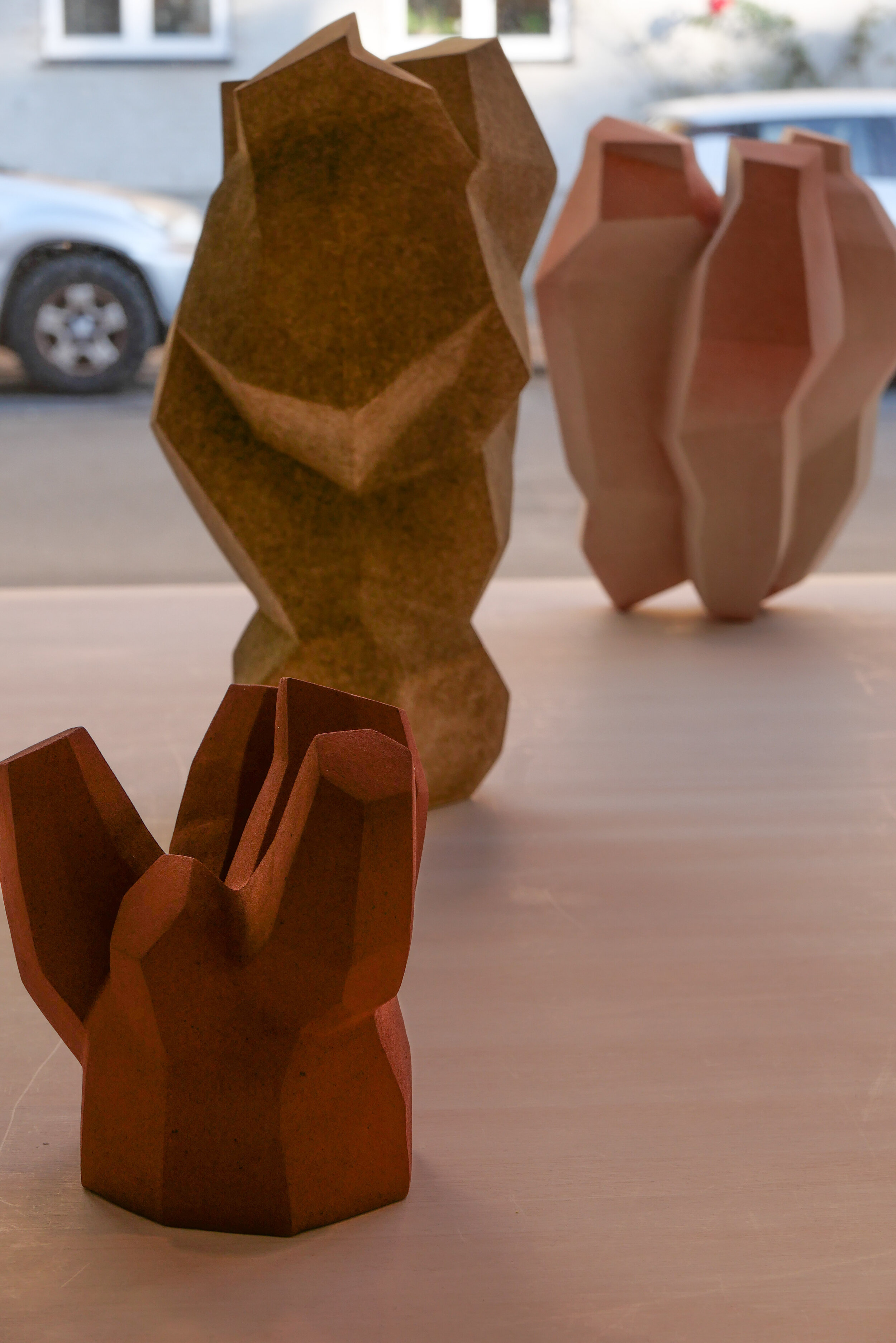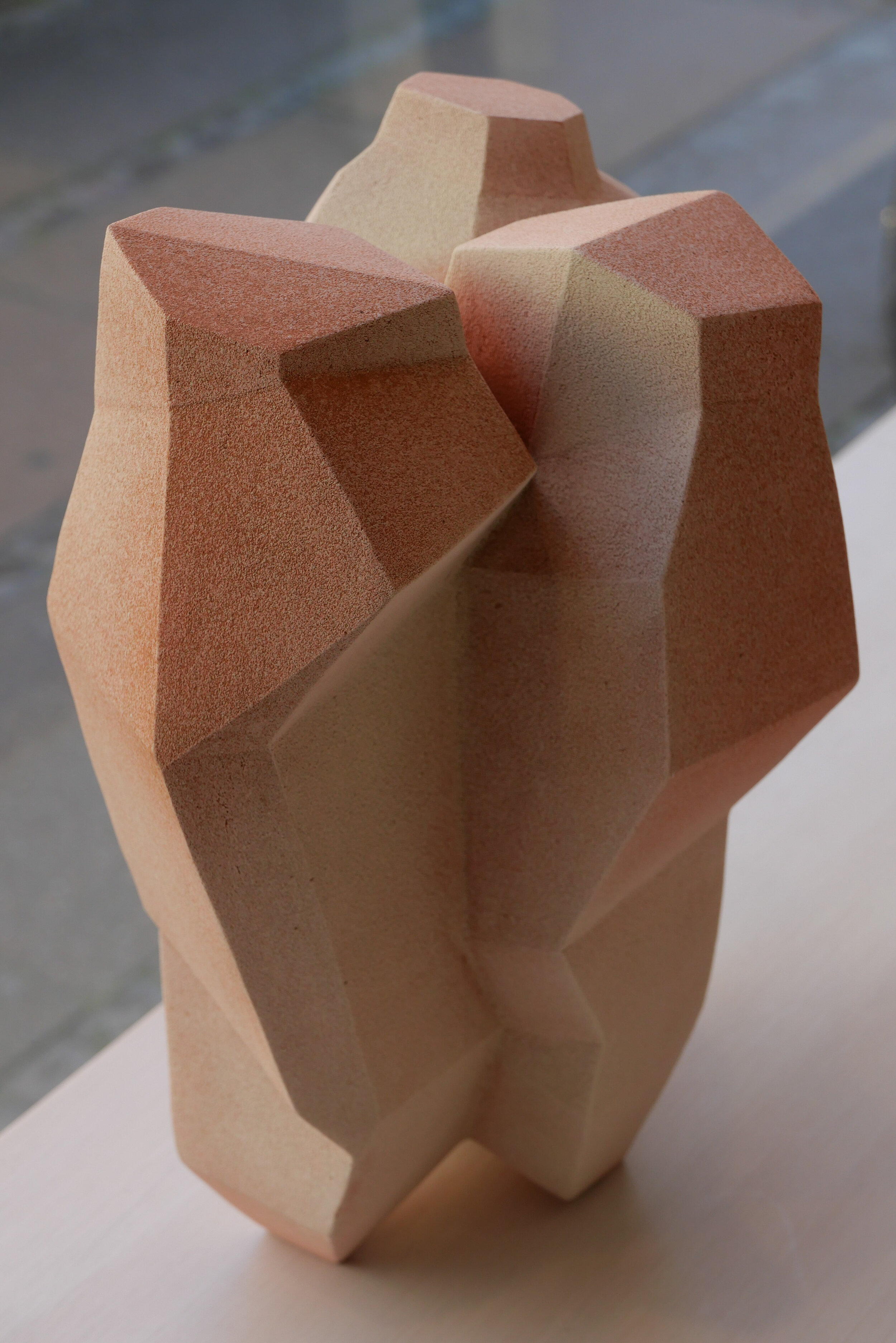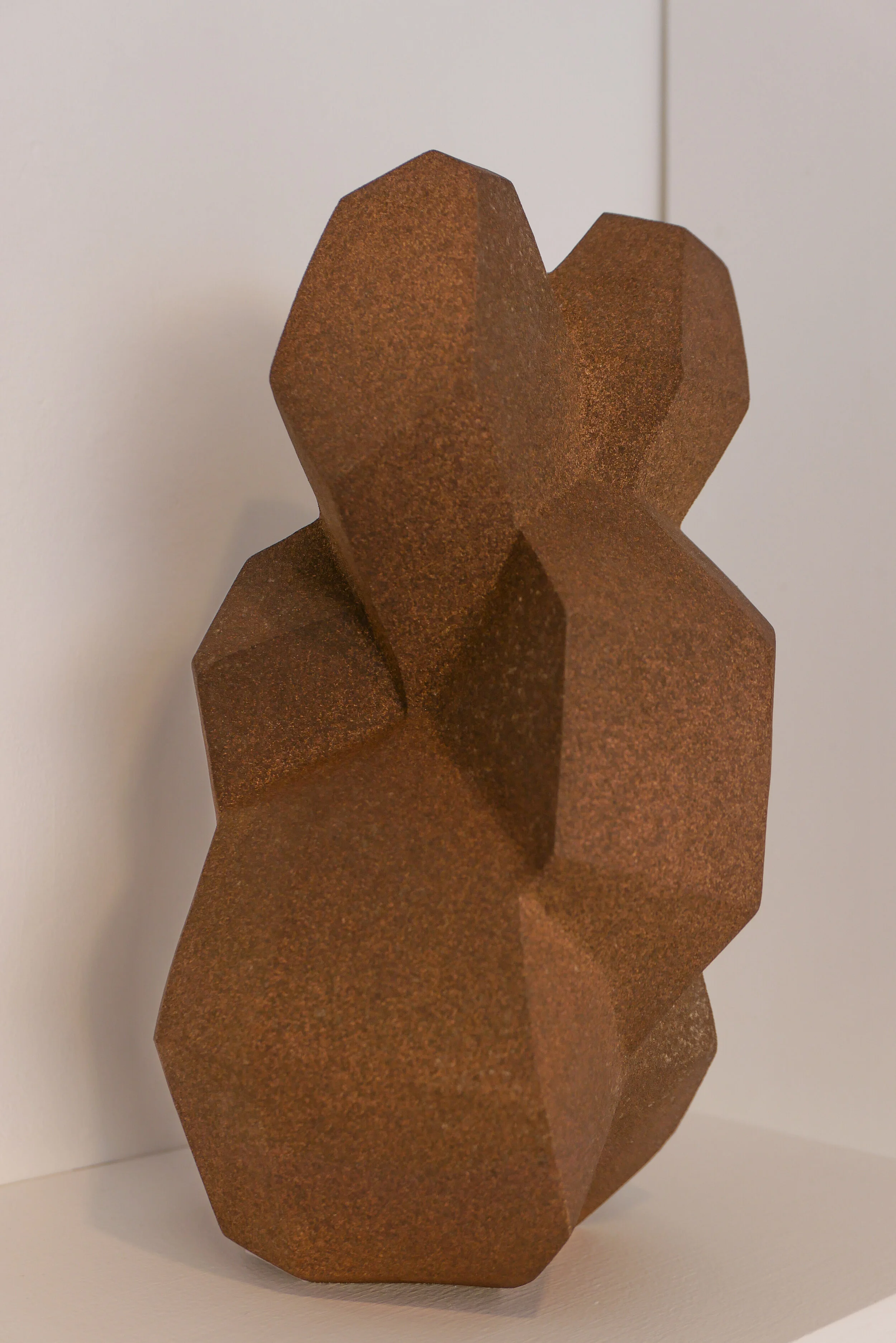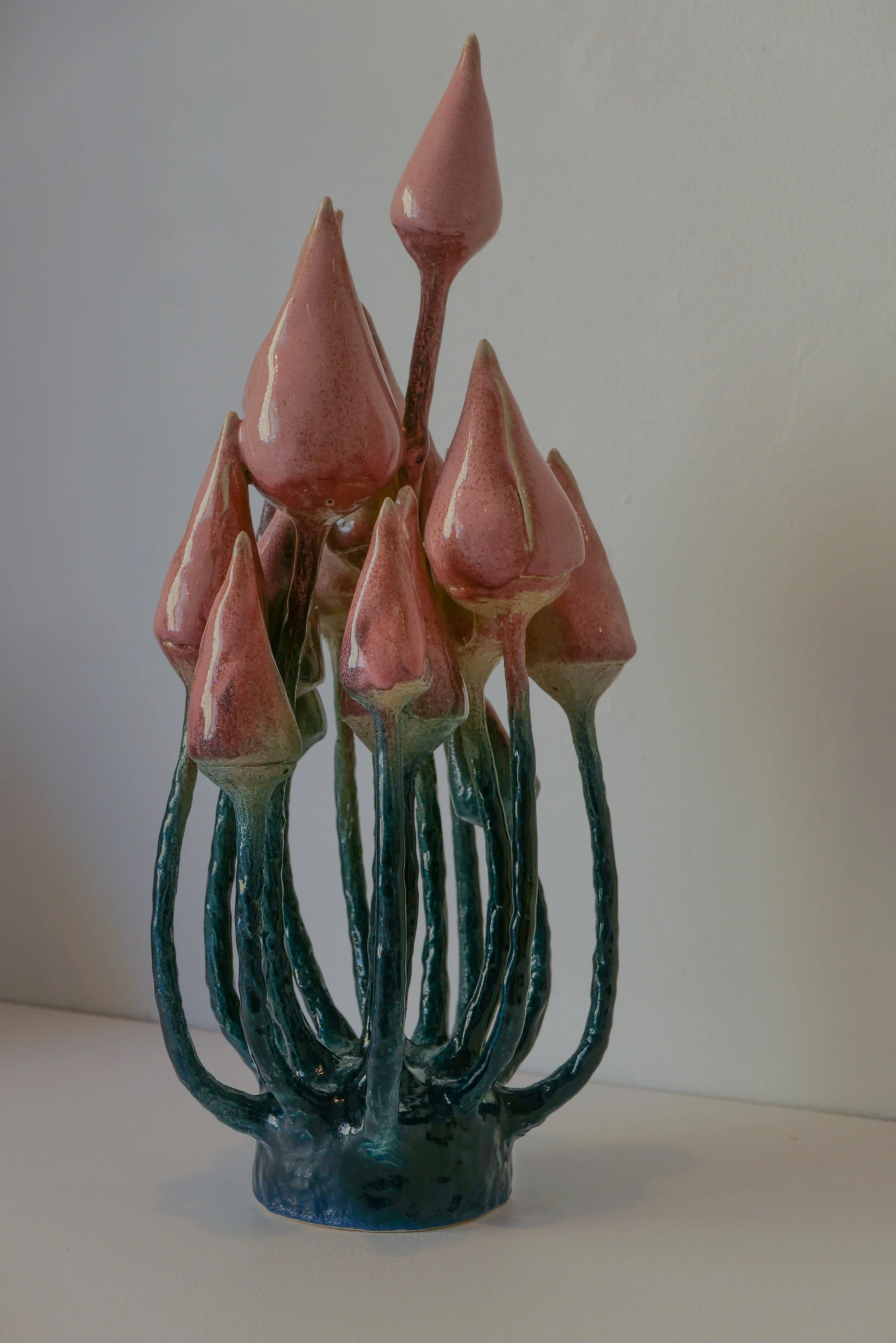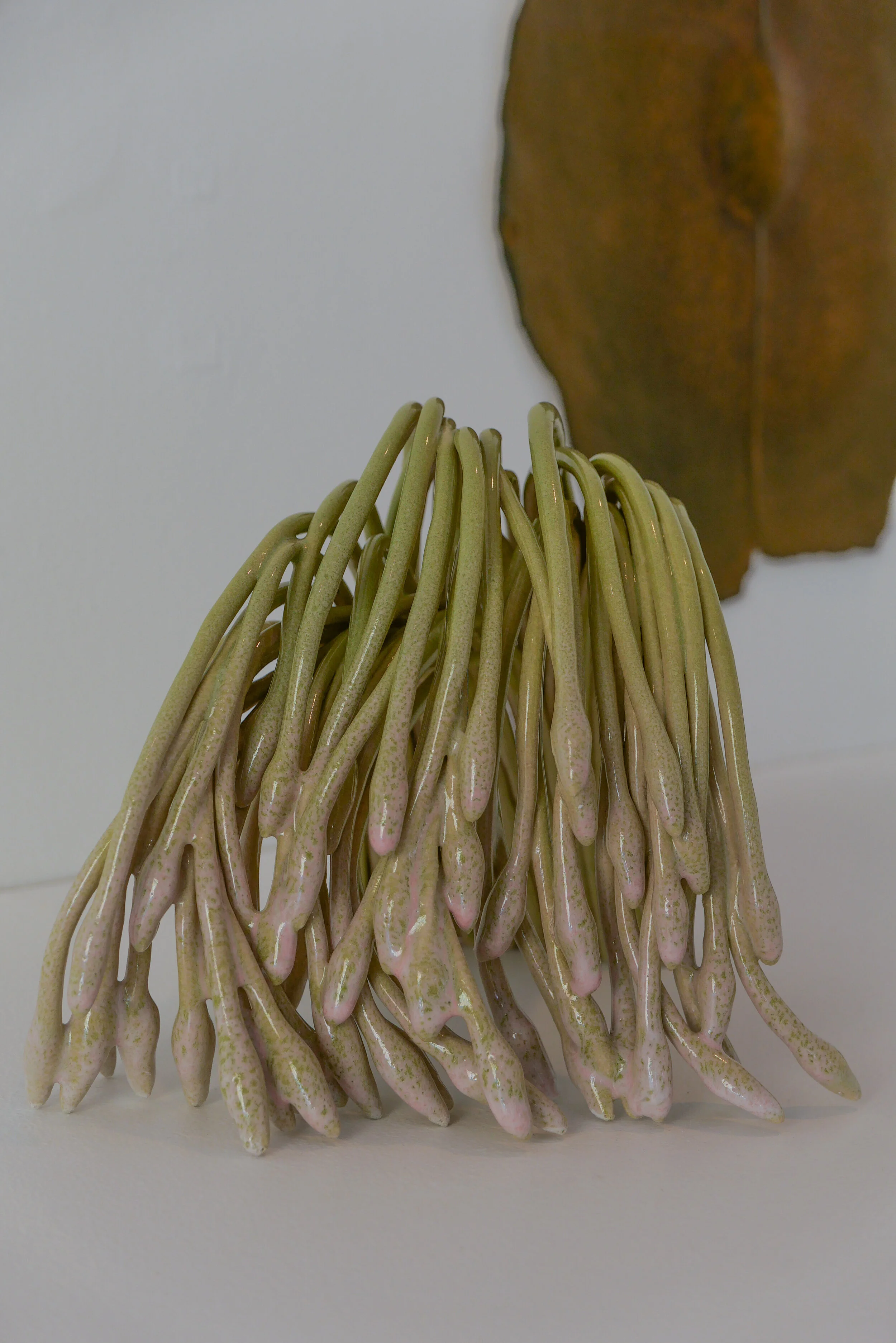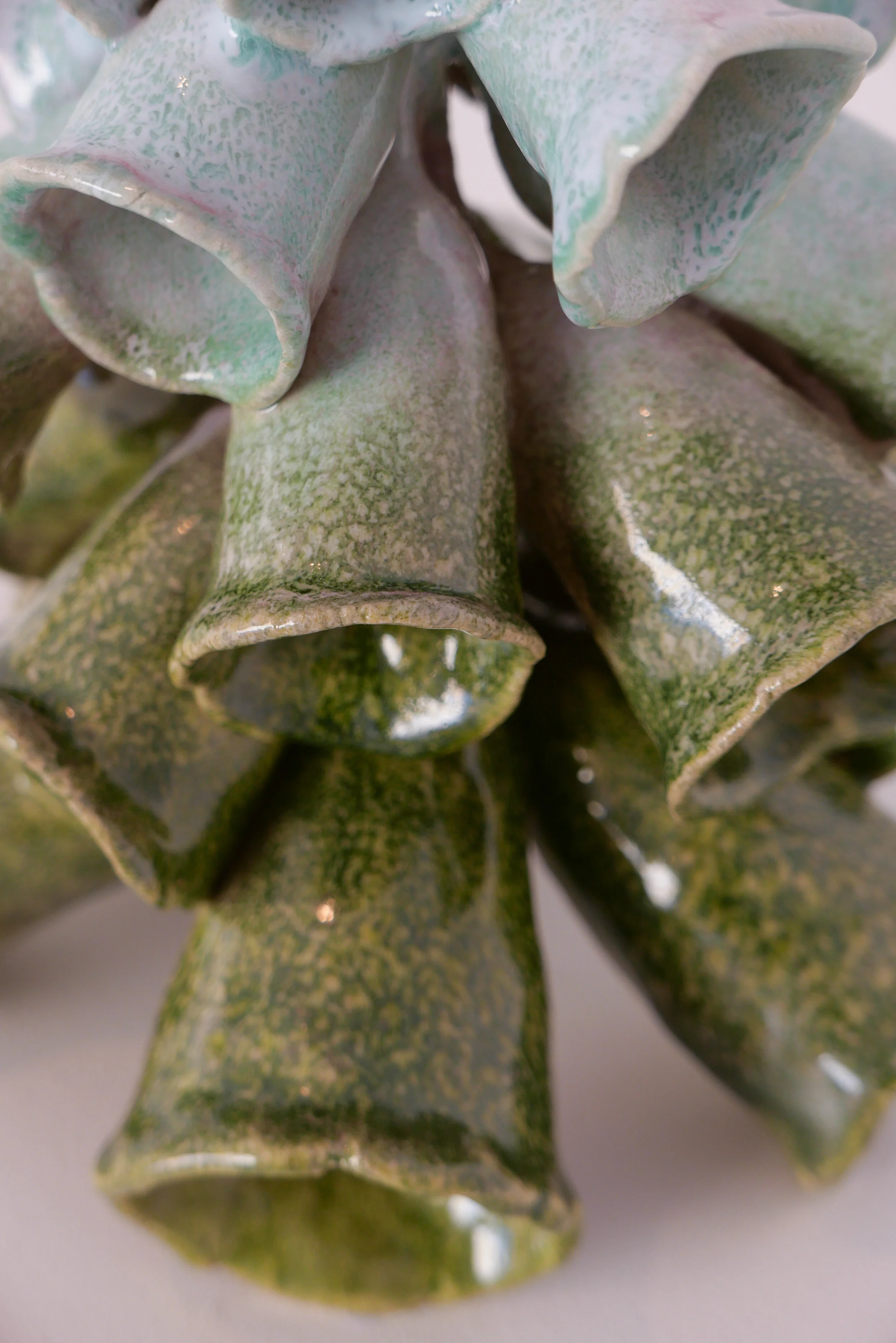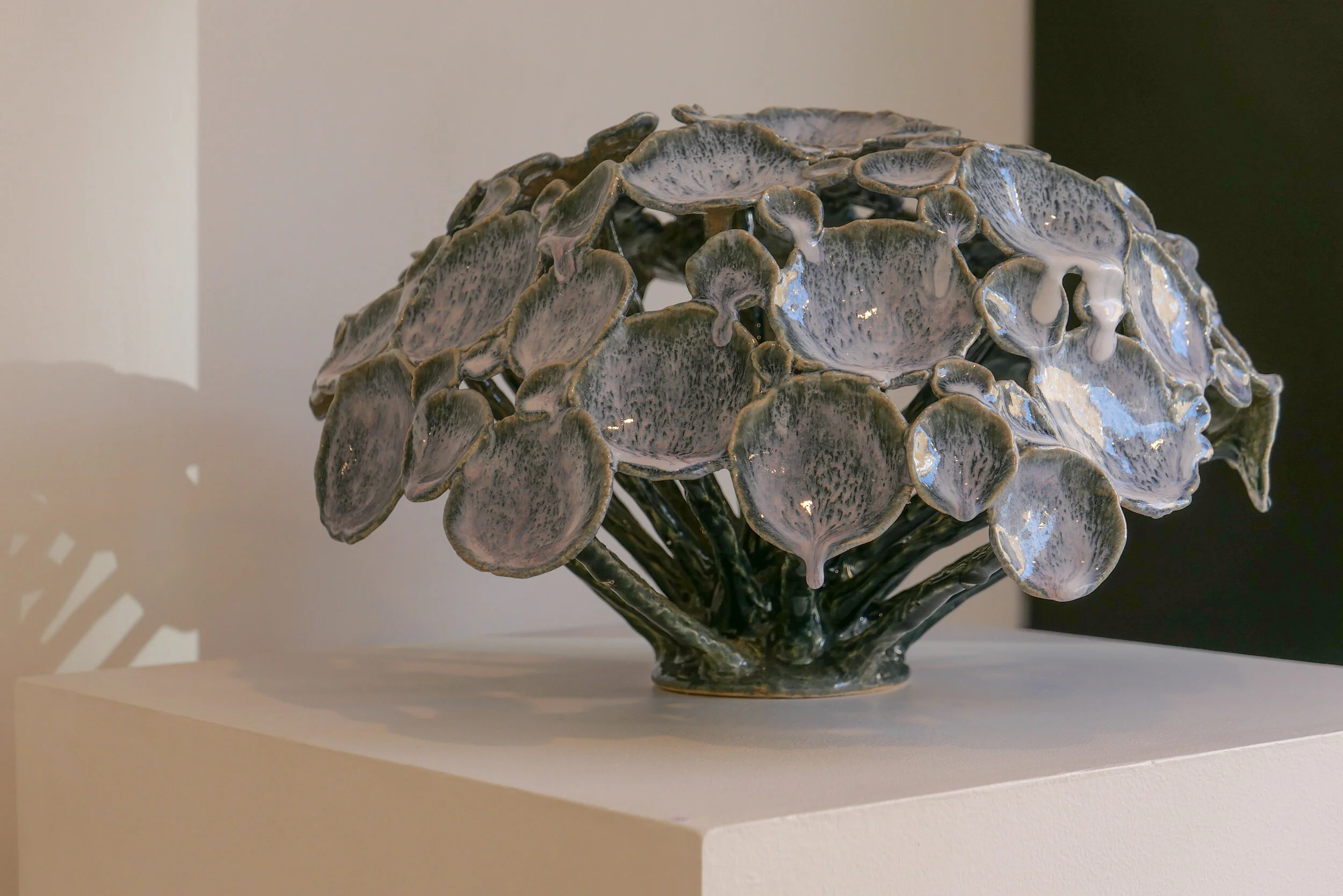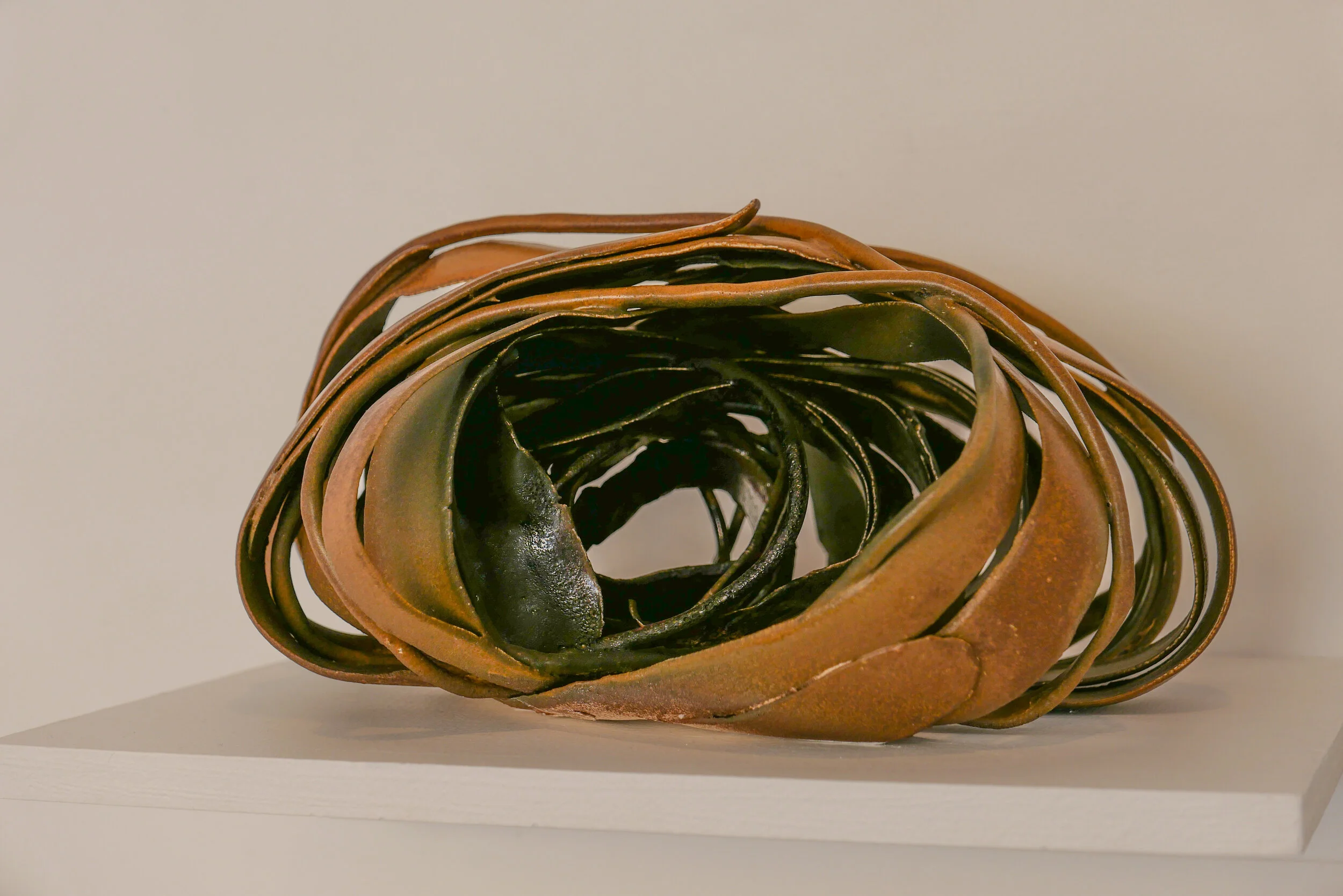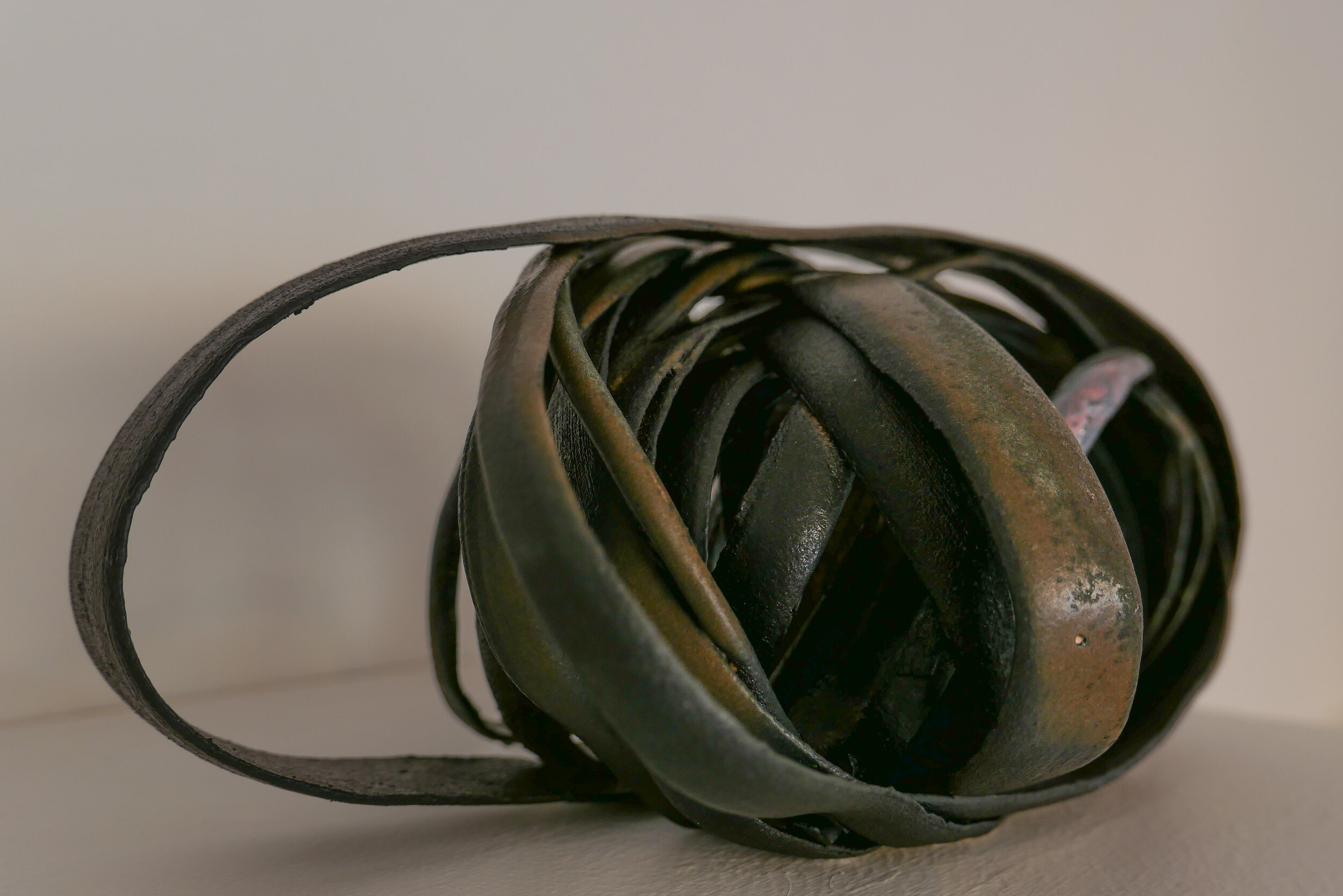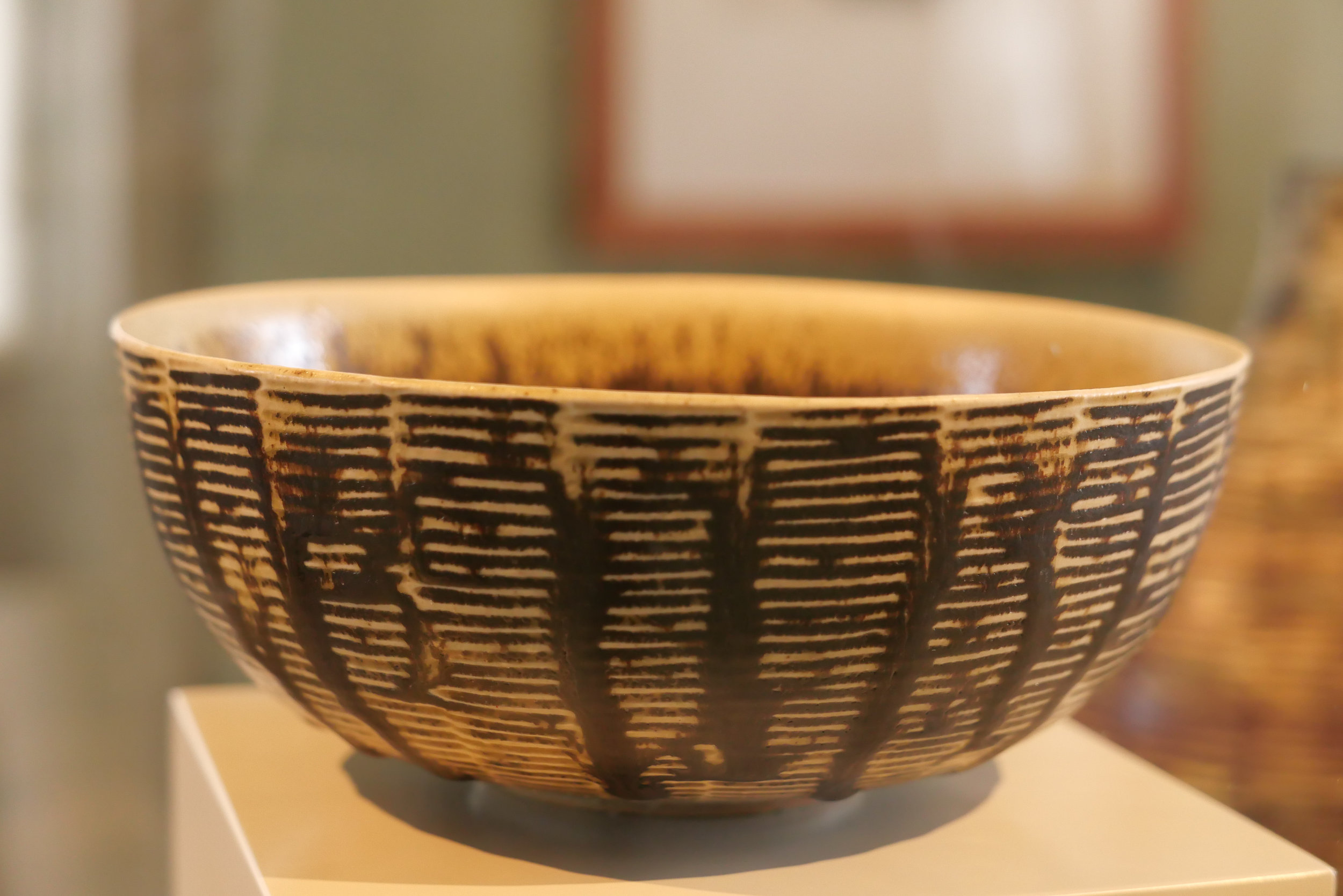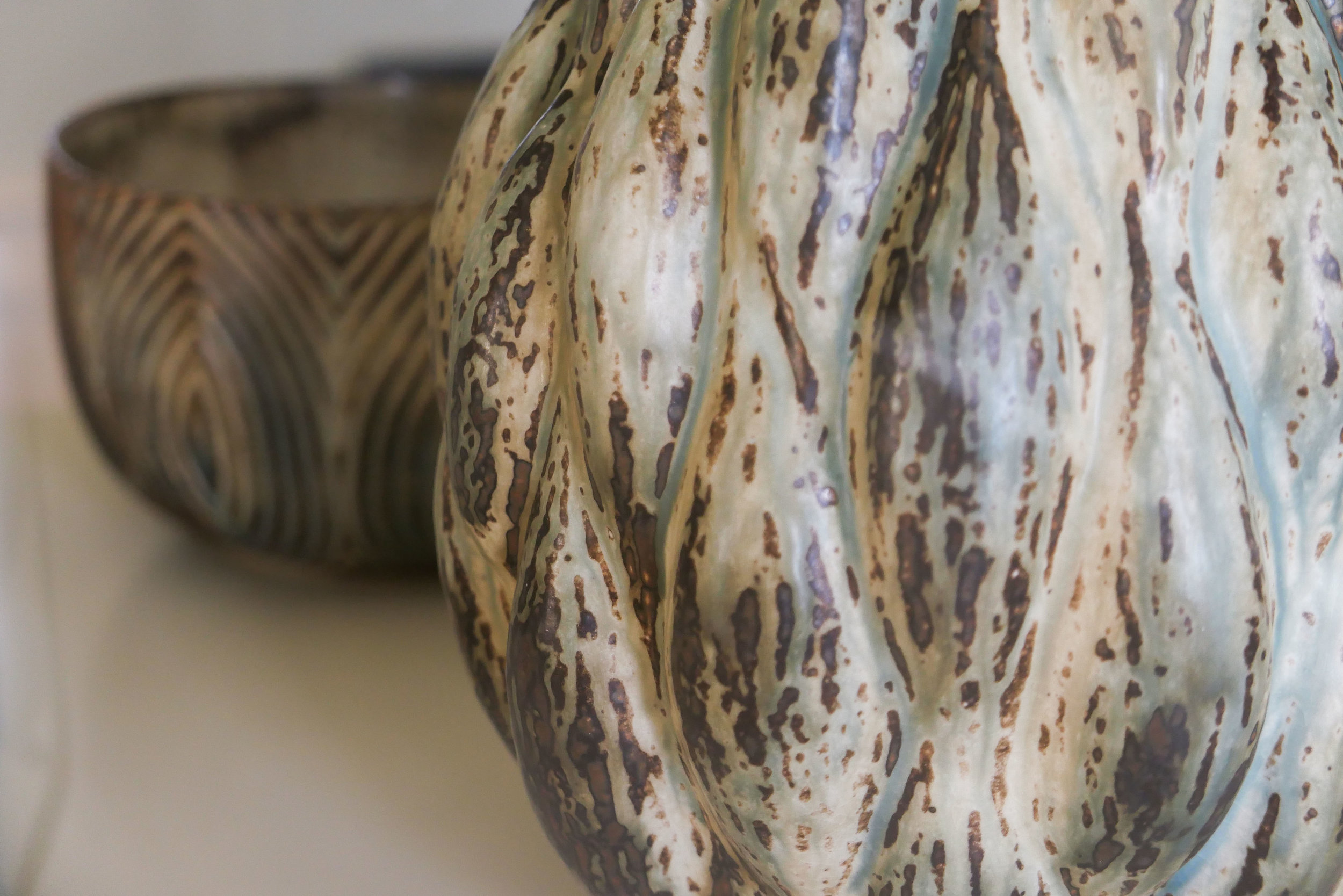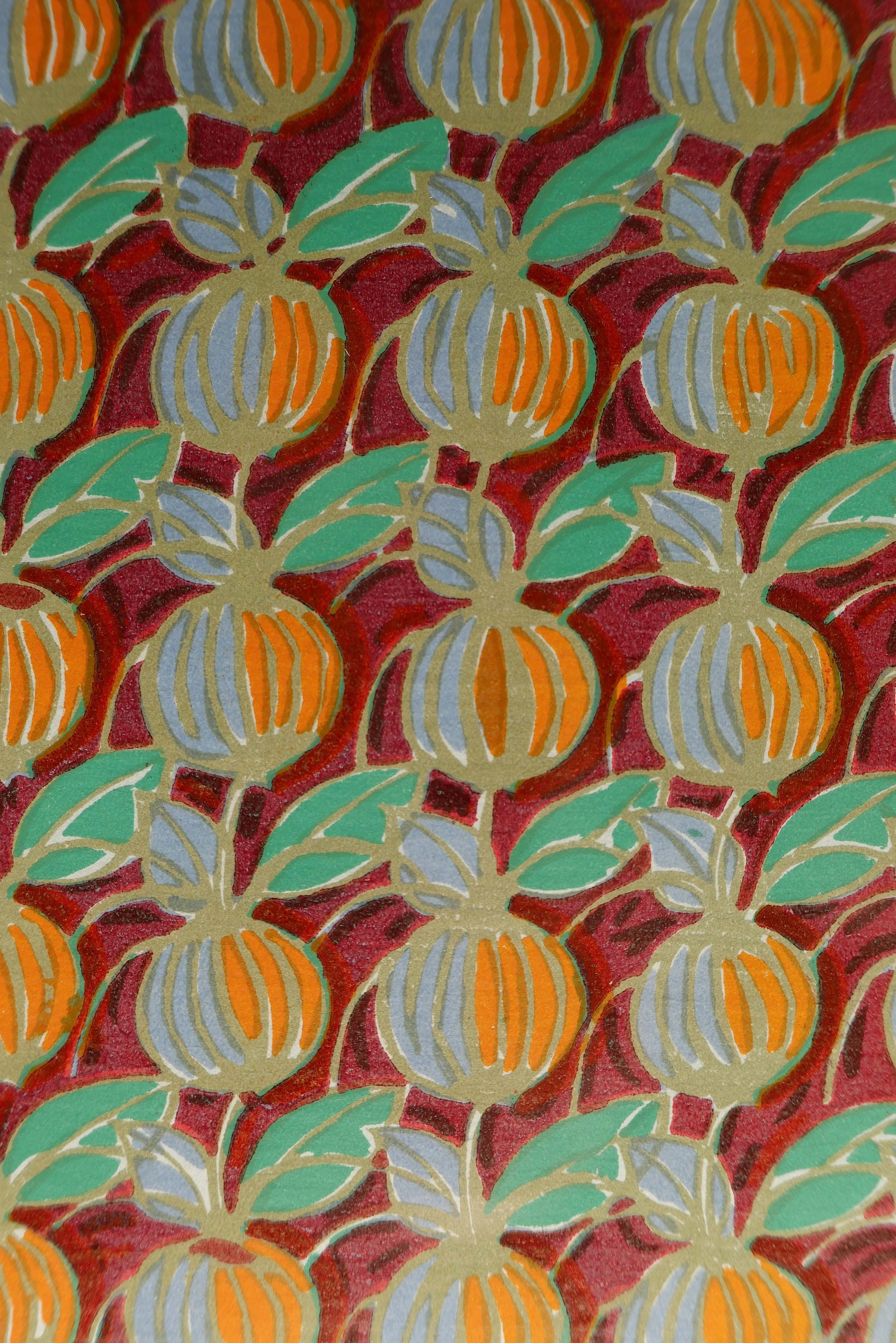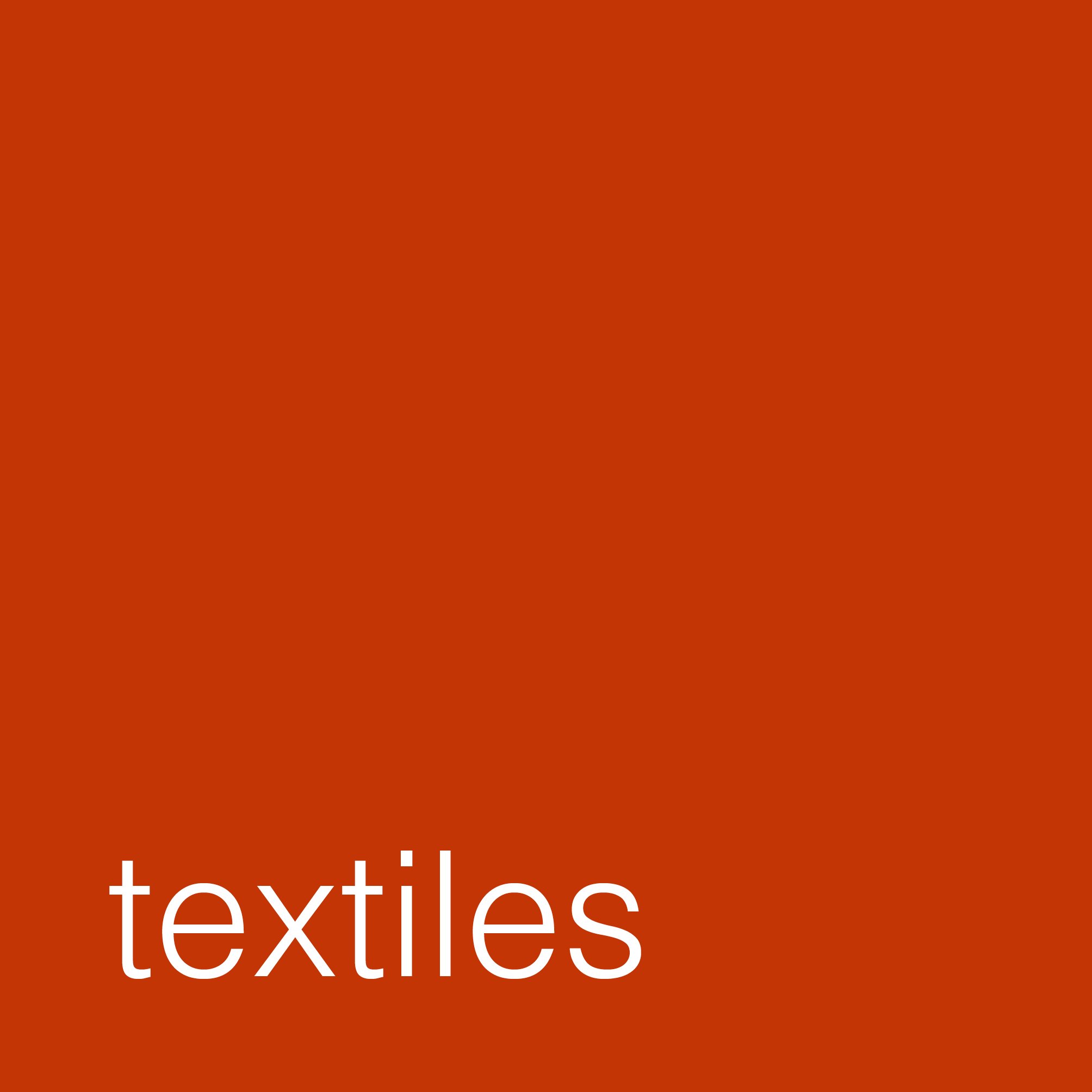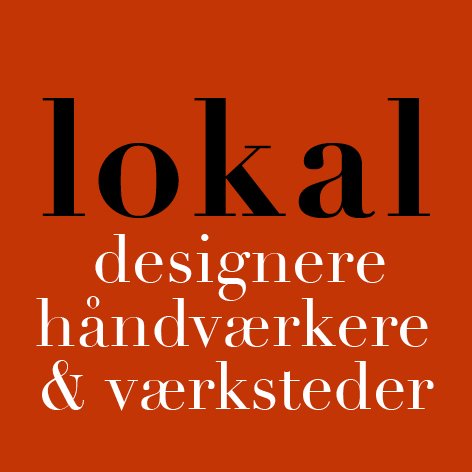Claydies at Ann Linnemann Galleri
/Claydiesselfies - an exhibition of the work of Karen Kjælgård-Larsen and Tina Broksø at Officinet - the gallery of Danske Kunsthåndværkere & Designere - was unfortunately disrupted by the closure of galleries during the lockdown of the city with the start of the coronavirus pandemic.
This exhibition, at the gallery of Ann Linnemann in Kronprinsessegade, is a welcome chance to see some of the works shown in that larger exhibition in the Spring.
Again it is possible to take selfies 'wearing' some of the full-sized ceramics of vests and T-shirts. If that is difficult to imagine then just think about those old seaside and fairground attractions with large painted cartoons of large ladies and skinny men in Edwardian swimming costumes without faces but with large holes where people stick through their faces from the back to be photographed.
The t-shirts with a Claydies logo on the chest or a string vest or a pleated skirt are obviously an ironic parody that comments on our obsession with both fashion and with taking pictures of ourselves or having our faces in every shot to prove we were there and show what a fantastic time we were having. But these huge pots are also a phenomenal affirmation of the ceramic skills of the two potters.
As I said in my review of the initial exhibition, the best cartoonists are usually highly-skilled artists who understand completely the techniques and skills in drawing that form the basis for their work. You have to master an art before you can subvert it. Here, at the Claydiesselfies exhibition, the works show an amazing and quirky sense of humour but also look at the use of colour, the use of different glazes, with references to various ceramic styles, but they are also very large pots that must have been difficult to fire. Virtuoso pieces.
This exhibition has smaller works that were not in the Officinet exhibition including the infamous and really rather macabre ceramic eye balls and surreal and unsettling clay noses and lips and ears on lumpy stalks that are set to face a mirror so that when you look into the mirror the lips and ears replace or overlay your own. I guess you have to be there and have done that to appreciate the joke ….. a bit like selfies really.
review of Claydiesselfies at Officinet
the exhibition is at
Ann Linneman Galleri, Kronprinsessegade 51, København
from 8 October 2020 until 14 November 2020







